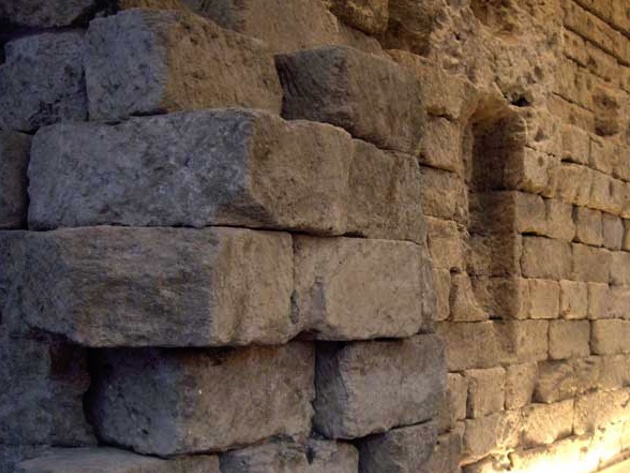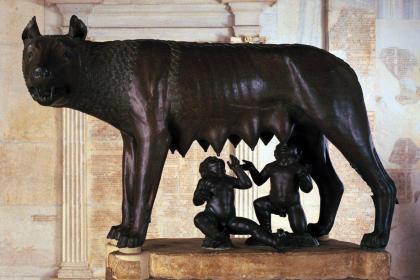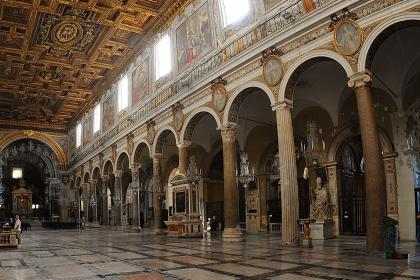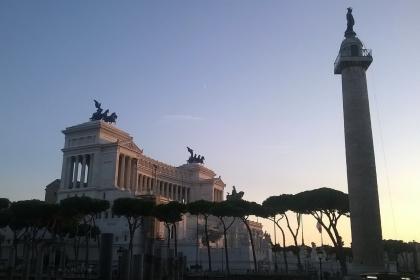
The Temple of Jupiter stood on the Capitoline Hill and was dedicated to the Capitoline Triad, that is Jupiter Optimus Maximus, Juno and Minerva. The construction, begun under the reign of the first Etruscan king of Rome Tarquinio Prisco in the sixth century and completed by Tarquinio the Superb, was inaugurated only at the beginning of the Republic in 509 BC.
Its large dimensions (approx. 53 x 63 m) make it the largest Tuscan temple ever built; the building stood on a high podium with an access stairway on the front. The facade and the two sides had six columns arranged in three rows, while the back side was blind. A deep pronaos preceded the three cells, the central one being wider than the others according to the canons of the Tuscan temple. The remains of the foundations and the podium consist of enormous masonry structures parallel to blocks of cappellaccio.In the large square in front of the temple there were numerous temples of minor gods and other sacred buildings, as well as statues and trophies.
Above the pediment was the terracotta quadriga, made by the Etruscan sculptor Vulca di Veio in the sixth century. BC, author of the famous Apollo of Veii preserved in the Museum of Villa Giulia. In 296 BC the quadriga was replaced with a bronze one, perhaps the work of the Ogulnii brothers, the same ones to whom the Capitoline Wolf is attributed. The cult statue, probably inspired by that of Zeus at Olympia by Phidias, is instead attributed to the Greek sculptor Apollonios. A copy of the Capitoline Triad is now on display in the Palestrina Museum.
The archaic temple was destroyed by various fires after which it was rebuilt in marble. Some coins and a relief of Marcus Aurelius now in the Capitoline Museums, in which it has four columns on the front, give us an image of the last phase of the temple. We also know that the roof was covered with gold sheets, removed during the barbarian invasions. The recent excavations conducted in the Roman Garden and inside the Palazzo Nuovo have brought to light much of the base of the temple formed by square blocks of cappellaccio.
Photo credits: Musei Capitolini official site
The Capitoline museums

 Condividi
Condividi
The Basilica of Santa Maria in Aracoeli

 Condividi
Condividi
Monument to Vittorio Emanuele II (Vittoriano)

 Condividi
Condividi
Information
Open daily, from 9.30am to 7.30pm;
24 and 31 December: 9.30 am - 2.00 pm
Last admission 1 hour before closing time.
Closed: January 1, December 25, May 1
 Condividi
Condividi
Location
To find out about all accessibility services, visit the Rome accessible section.











































